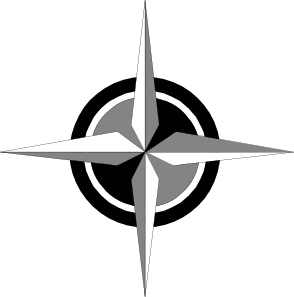Rogaine Rules
I invented ROGAINE as an outdoor ed instructor at Lucy Baker School. Two years later I introduced it at St. John's School of Alberta. Jason Coates was director of the outdoor program there, and told me that I had re-invented the wheel.
This is an adaptation of the R.O.G.A.I.N.E. class of race used worldwide by various orienteering clubs. We have made modifications to enhance safety; increase the general map knowledge skills; make planning and strategy a major component of the program; and make it more workable with teams.
Key differences:
The map is a composite of aerial photos instead of an standard orienteering map. Water courses and trails not visible in the AP have been added, as well as boundaries, some buildings, all power poles with higher voltage than the bottom level distribution level, most well heads. It is printed with a UTM grid and a lat/long reticule. The map is oriented to UTM grid north. At this point it does not have contour lines.
Teams have an unmarked map and clues instead of a pre-marked map. This puts a huge emphasis on planning.
The map is supplied to the teams several days in advance of the race. Cheating is possible, but we count on player's integrity.
Teams must declare a route (but can deviate from it). However, the scoring system rewards a well followed plan.
Points for a control are not the same. Points depend on difficulty to get there, difficulty to find it, and difficulty of the clue. Some existing rogaine systems also do this.
Bonus points may be awarded for getting to a control first, or for being the only team to find a control. The variability of points makes route planning strategy important. The complicated scoring means a spreadsheet is used. Data entry takes a few mintues per team. This would be unacceptable with a large number of teams.
Our minimum group size is 4.
We use permanent controls -- a 4x4 piece of tenplast fastened with roofing nails. This allows us to set the controls out before tehre is snow on the ground, and be confident they will still be there on the race day.
The use of ID/codephrase means we don't need a punch at each control.
We play our game in mid-winter. The controls used usually aren't selected until the week before the race. This allows for adjustment in the difficulty of the depending on weather, current snow on ground, and skill levels of the participants.
